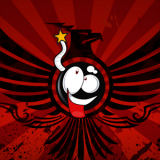The Keyblade Chronicles - Episode One (Kingdom Hearts Final Mix - Parts 01-05)
By danielkempster 4 Comments
| No Previous Episode | Navigation Menu | Episode Two >> |
Ladies and gentlemen, the moment they thought would never come is finally upon us. Get comfortable, put on your biggest shoes, dig out your replica cosplay Kingdom Key and start rehearsing the words to Simple and Clean. It's time to play some Kingdom Hearts.

Yes folks, it's time for the first proper episode of the Keyblade Chronicles, the projected weekly blog series in which I'll be attempting to get fully caught up on the entire Kingdom Hearts franchise before the third (but actually tenth) and final instalment releases in January 2019. For those of you who missed my introductory blog, which outlines the specifics of what I'm aiming to do with this series, I'd recommending reading that before the rest of this entry. Once you're all caught up, feel free to read on.
Our journey begins, as any good journey should, at the start. The original Kingdom Hearts holds a special place in the hearts of a whole generation of players, myself included. Its fusion of Final Fantasy-style RPG mechanics and Disney-inspired characters and locales gave players an experience unlike anything else that had come before it, and laid the foundations upon which Square Enix and Disney Interactive would build an entire franchise. In the first set of instalments of the Keyblade Chronicles, I'll be dissecting this charming oddity of a game, juxtaposing a contemporary playthrough with my own historic remembrances to determine how well it holds up, both as a stand-alone video game and as the progenitor of a vast and confusing lineage. No stone will be left unturned - I'll be exploring every world, sealing every Keyhole, finding every last important item and taking on every single optional activity as I push to complete both Sora's quest and Jiminy's extensive Journal. I'll be sharing my thoughts on the game's plot developments, gameplay mechanics, aesthetics, level design and use of source material, assessing how each piece of the puzzle contributes to the overall melting pot of Kingdom Hearts.
What I'm trying to say is - this is going to be a long blog. So as I said at the beginning, make sure you're comfortable. We might be here a little while...
Part 01 - A Distant History
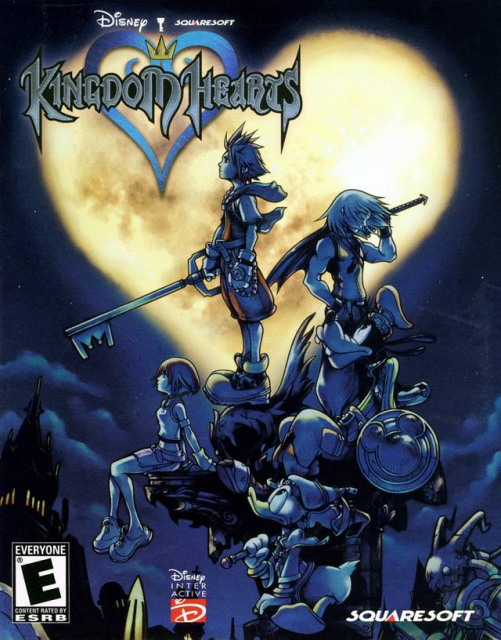
Before we begin, I feel it may be relevant to establish my personal history with Kingdom Hearts. It's also probably worth establishing that from here on out and until further notice, I'll be using the term 'Kingdom Hearts' to refer to the first game in the series. If I want to acknowledge the Kingdom Hearts series as a whole, I'll use phrases such as 'the series' or 'the franchise'. Since the first game doesn't have a subtitle of any kind, this is the best way I can think of handling it.
Kingdom Hearts launched in the late autumn of 2002 here in the UK. At the time I was twelve years old, and had developed a taste for Japanese RPGs off the back of discovering Final Fantasy VII two years previously. Back then I didn't have my finger on the pulse of the industry in quite the same way as I do today, probably due to having no internet in the family home at the time and most of my video game information coming either from magazines or from the word of mouth of friends. Consequently, I wasn't even aware of Kingdom Hearts' existence before my first encounter with a shelf of boxed copies in my local GAME store. I recall being drawn to that display like a moth to a flame, most likely due to the striking holographic cover which I can vividly recall to this day. Despite not knowing anything about the game, one close look at the box was all it took to assure me it was a product of quality. As a kid who grew up through the "Disney Renaissance" of the nineties, I was very familiar with films like The Little Mermaid, Aladdin, Hercules and Tarzan. Equally, my formative interest in JRPGs told me that any product bearing the Squaresoft logo was one I could trust. Throwing caution to the wind, I spent my limited games allowance on a copy of Kingdom Hearts and took it home that very day.
This was over fifteen years ago, and my memories are sketchy, but I'm fairly certain that it took me around three months to work my way through Kingdom Hearts, beating it for the first time around (if not on) my thirteenth birthday. What I recall more clearly than the actual act of completion, however, was the fun I had playing it. Coming off the back of the Final Fantasy series' more static turn-based battles, being able to move, jump and attack in real time was an appreciated novelty. I found the core trio of original characters pretty relatable - they were around the same age as me, and on a fundamental level shared some of the same anxieties I had about feeling out of place in the world and yearning for something beyond the norm. I loved being able to act out scenes and explore locations from films that I'd seen dozens of times in my formative years. Equally, it was a thrill to see some of my favourite Final Fantasy characters rendered in such high-quality 3D for the first time - bear in mind that Kingdom Hearts predates Advent Children by some years and you may begin to understand just how exciting it was to see a faithfully recreated 3D Cloud Strife turn up in Olympus Coliseum. The Disney-inspired content was on-point graphically and faithful to its source material, the soundtrack was fantastic, and the story kept me invested right up until the final boss battle. To twelve-year-old me, it was the perfect game.
If my memory serves me correctly, I beat Kingdom Hearts no less than three times between its release in November 2002 and the launch of Giant Bomb in July 2008 - the point at which I started keeping a catalogue of the games I'd beaten, initially in blog form, then using the List feature from January 2009 onwards. One of those was a comprehensive 100% playthrough, the save file for which remains on my PlayStation 2 memory card to this very day. Those three playthroughs put the game high enough in my regard that I positioned it at number 14 in a list of my Top 30 Games published here on Giant Bomb in March 2009 (a list I intend to revisit next spring for a tenth anniversary update). In the past ten years I've beaten the game a further two times, both of those playthroughs being through the Kingdom Hearts HD I.5 ReMIX collection in the opening months of 2015. While I didn't feel as attached to the game then as I did in my adolescence, I still found a lot to like about the experience - enough to play the game twice over in a very short space of time, at least. Now, with another three years of distance between the child I was and the man I am now, I'm set to embark on what will be my sixth full playthrough of Kingdom Hearts, and it's sure to be my most thorough and most critical exploration of the game to date.
Part 02 - The Version Aversion
There are a few different versions of Kingdom Hearts available, so it's probably a good idea for me to clarify which one I'll be playing for the Keyblade Chronicles and why. Kingdom Hearts originally released for the PlayStation 2 in March 2002 in Japan, followed by a US release in September 2002 and a European release in November 2002. The delayed release for America and Europe meant the developers were able to add a bunch of additional side-content to those versions of the game - content that Japanese players wouldn't get to experience until they received a new version of the game, subtitled Final Mix, in December 2002. Ironically, that version also contained additional content that American and European players missed out on, including new cut-scenes, new enemy types, and a new secret boss battle. All these version differences were rendered irrelevant in 2013 when a standardised version of Kingdom Hearts Final Mix was released across all territories as part of the Kingdom Hearts HD I.5 ReMIX collection for the PlayStation 3, unifying the experience for players all over the globe.

Despite the original UK PS2 release being pretty feature-packed in its own right, I've instead opted to play the Final Mix version of the game for the Keyblade Chronicles - specifically, the one bundled in as part of the Kingdom Hearts HD I.5 & II.5 ReMIX collection on PlayStation 4. The simplest reason for this is that, regrettably, I no longer own my original PS2 copy, but even if I did, there are still plenty of reasons to choose one of the two more recent releases. As well as boasting extra story and gameplay content, these versions offer some significant quality-of-life improvements over the PS2 original. Most notably, camera control has been mapped to the right analog stick instead of the trigger buttons. Additionally, several context-sensitive actions have been moved from the fourth slot of the action menu to a dedicated Triangle button prompt, similar to Reaction Commands from Kingdom Hearts II. Plus there are all the expected bells and whistles of a current-generation remaster, with silky-smooth sixty frames-per-second gameplay and high definition 1080p visuals as standard. Finally, there's the simple fact that these are the most readily accessible versions of the game available today, packaged in collections purpose-built to help players get caught up in time for Kingdom Hearts III. Since that's the whole point of this feature, it makes most sense to play this version over any other.
With that said and done, let's boot up the PS4 and launch into some Kingdom Hearts!
Part 03 - What Have You Done Today to Make You Feel Proud?
As I start this playthrough of Kingdom Hearts Final Mix, I'm prompted to make a few decisions. We won't worry about the ones pertaining to the camera movement and target lock, since they can be toggled during gameplay. The one decision that will have a permanent impact on my adventure is my choice of difficulty level, which is locked in from the get-go and can't be changed at any point once the game begins.
There are three options - Beginner, Final Mix, and Proud. Beginner, as the name suggests, is intended for people who've never played a Kingdom Hearts game before. It gives the player some valuable items to help them along on their journey and boosts their damage output, but at a cost - players won't be able to unlock either of the game's secret endings by playing in this mode. Final Mix is the standard, most balanced difficulty and is the way the game was meant to be played. Diligent players who explore everything the game has to offer will be able to witness its secret endings. Finally, there's Proud, the equivalent of a hard difficulty setting. This mode reduces the player's damage output and makes them more vulnerable, but its requirements for unlocking the secret endings are a little more lenient to compensate. It also offers the option to turn off all experience gain, for players who wish to challenge themselves by attempting a "Level-1 run".
While there's no doubt an argument to be made for playing on the default difficulty for this series, I've decided to opt for Proud instead. The main reason for this is that I've played a LOT of the original Kingdom Hearts at this point, and I feel like playing in Proud is the best way to guarantee a reasonable level of challenge and keep me entertained while playing. The added difficulty will hopefully encourage me to approach fights more tactically rather than simply mashing on X non-stop, which should help when it comes to putting together detailed write-ups for boss battles. Since there are no story ramifications for selecting a higher difficulty (beyond the accessibility of secret endings, which I was planning to do everything required to unlock anyway), my decision to play on Proud shouldn't have any pronounced impact on the content of the Keyblade Chronicles.
Part 04 - "Is Any of This For Real, or Not?"
Upon hitting New Game and choosing a difficulty level, Kingdom Hearts opens with a CGI cinematic scene. It's not a surprising choice, given developers Squaresoft (now part of the Square-Enix family) established themselves as the undisputed kings of computer-generated FMV on the original PlayStation. The scene depicts a spiky-haired youth in what seems to be a dream sequence. "I've been having these weird thoughts lately," he declares. "Like, is any of this for real, or not?" A statement of uncertainty that's going to echo the player's thought process as the scene unfolds over the next three minutes. There are three characters featured, along with a lot of falling and a lot of water - things which open themselves up to metaphoric interpretation, but which I won't be exploring in great detail here for fear of going too deep down the rabbit hole before we've even begun. For now, I'll leave you with an embedded version of the opening cutscene to watch for yourselves:
Considering it's over fifteen years old at this point, I think the quality of the cinematic holds up surprisingly well - the colours are bright and the characters all animate well. But let's be honest, what we really need to talk about here is the score. Assuming players haven't sat at the start screen and allowed the idle cutscene to trigger, this is the first time they'll have heard an arrangement of Kingdom Hearts' main theme, Simple and Clean. This specific version, dubbed the 'PlanitB Remix', stands out for me personally as one of the most iconic pieces of music in the franchise. It's very up-tempo and fits well with the on-screen action, and the simplicity of the lyrics combined with the driving beat ensure it'll be a lasting earworm for the vast majority of players.
The cutscene segues seamlessly into gameplay, placing the player in control of our pointy-headed protagonist (whose name as yet remains a mystery) in a strange realm of darkness, punctuated by stained-glass platforms featuring the likenesses of various Disney princesses. In a twist I've found humorous ever since I noticed it back in 2015, Kingdom Hearts manages to contradict itself in its first piece of in-game dialogue - "So much to do... So little time..." declares a disembodied voice, before immediately telling the player to "Take your time...". In a franchise that I know is going to trip up over the hem of its own lore multiple times in the games to come, it's almost comforting to see the contradictory tone established this early.
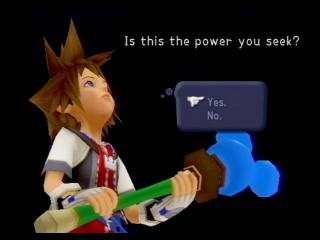
This zone, officially named 'Dive into the Heart', serves as a tutorial area, teaching the player the fundamentals of controls and gameplay and also presenting them with some choices that have a slight impact on character development. The first of these choices comes immediately, as the disembodied voice presents me with a sword, a shield, and a staff and tasks me with choosing one and forsaking another. The first choice determines the order in which I'll learn abilities through levelling up, with the three options representing attack-focused abilities, defence-focused abilities, and magic-focused abilities respectively. Together with the second choice, it also impacts my initial MP, Strength and Defence. I decide to take up the staff and forsake the sword for this playthrough - this will give me early access to magic-focused abilities, but more crucially, it will ensure I have a healthy reserve of MP throughout the whole game. Ditching the sword is preferable to the shield since Strength boosts from weapons and accessories will be plentiful, and I'm going to need all the Defence I can get in Proud mode.
Over the course of this tutorial, I notice a few things which are worth documenting. First up, let's talk about those Final Mix quality of life improvements. The mapping of camera control to the right analog stick gives the game a much more contemporary feel than the draconian shoulder button method used in the original PS2 release, especially as you can now move the camera on the Y axis, although if I'm being nitpicky I would have preferred some sensitivity adjustment options as it's just a little sluggish for my liking. The context-sensitive Triangle button mapping works nicely too - even though it's only cutting out one button press, it's also eliminating the need to remove a thumb from the left analog stick to use the D-pad, making everything feel more seamless and fluid. Something I have less praise for, however, is the constant switching between high-poly and low-poly faces on the player character's model. I don't remember it being this jarring when I played the game on PS2 - possibly because the lower screen resolution made it less obvious, or maybe I'm just less forgiving of such things these days. Whatever the reason, it's something I foresee breaking the immersion for me throughout this playthrough.
The primary focus of the next section is teaching the player how to fight by introducing them to attacks and the target lock-on feature during battles with several shadowy creatures. It's obviously very early on in the game to be passing judgement on the battle system, since we're a long way off having anything resembling a variety of moves at our disposal. That being said, it's impossible to deny that Sora's basic combo feels a little... off. There's a pronounced delay between the start of the animation and the attack actually connecting, so while the action on screen looks great, it never feels totally one-to-one with the buttons I'm pressing. I get that he's not a competent fighter at this stage, and I know that a lot of the additional bells and whistles that will come to feature in combat will go a long way towards mitigating this, but that doesn't do anything to make Sora's standard three-hit combo any more fun to use.
After being taken through the basics of movement, combat, exploring and interacting with the environment, I'm whisked out of the darkness and onto an island that looks a lot like the one in the opening cinematic. Three characters surround me, characters who veteran Final Fantasy nuts (as I was back then) will recognise as Selphie from Final Fantasy VIII, and Tidus and Wakka from Final Fantasy X. They've got some questions to ask me, and once again, how I answer will have a subtle impact on character development - specifically, how much experience is required to level up. Most combinations of answers will result in a standard growth rate, but certain combinations can yield rates that favour either early or late growth. While the latter may be preferable in the long-term, since it requires less overall experience to reach max level, the answers I give result in the standard growth rate, which I'm fine dealing with.
With all this information gathered, Kingdom Hearts kicks me back to the Dive into the Heart and finally gives me access to the menu, where I can do all sorts of RPG-ish things like check character stats and modify equipment, item and ability loadouts. It also presents me with my first save point, a ring of light which fully heals on contact and (unsurprisingly) allows me to save my progress. I do so, knowing that the game's first boss battle awaits...
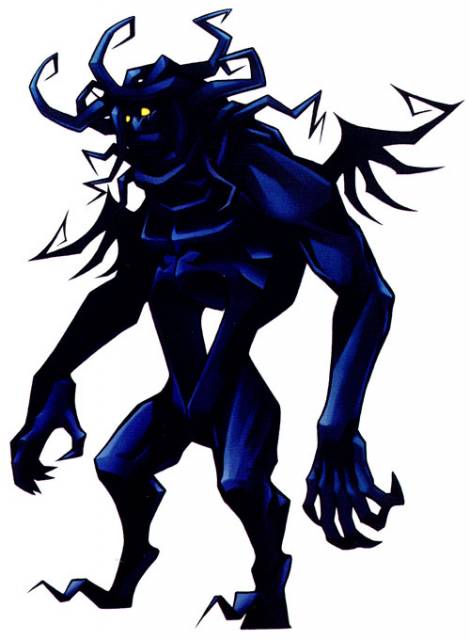
BOSS - Darkside - Having been taught the basic mechanics of fighting, this first major encounter teaches players about the basic ebb and flow of Kingdom Hearts' unique brand of action combat. Darkside is a giant, twisted, humanoid creature born out of our protagonist's shadow. It has three weak points which can be attacked to deal damage - its two hands, and its head. In this battle, it has two main attacks - a fist attack which strikes the ground and creates a shockwave before releasing smaller shadows, and an energy ball attack which is released from its chest cavity while kneeling. Both of these attacks have long wind-up animations, giving the player very obvious tells as to when an attack is inbound. Players can then instinctively read the battle situation and work out when to attack and when to retreat. By far the hardest part of this fight is dealing with the energy balls - they home in on the player, and since none of the tutorials mention parrying or deflecting attacks, novice players are unlikely to be aware that a well-timed attack can send them hurtling back towards Darkside for additional damage and bonus "tech" experience points. This is one of the few fights in the game where losing will not cause a Game Over state, meaning there's no real penalty for not winning besides missing out on some early experience.
After the fight, our spiky-haired protagonist finds himself overwhelmed and sinking into darkness. The disembodied voice tells him not to be afraid, and to remember that he is the one who will open the door, before the entire screen fades to black...
Part 05 - Your Destiny Awaits
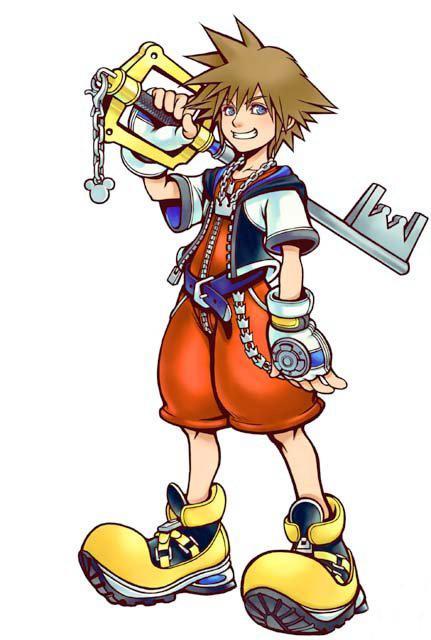
...and our protagonist wakes up on the same beach that we saw in the opening cinematic. It's here that we're finally properly introduced to Sora (yep, unless you were paying attention in the menu earlier on, this is the first time Sora is referred to by his name), as well as his two closest friends, Riku and Kairi. The trio live on Destiny Islands, a remote and idyllic world where it appears very little ever happens. It transpires that the three are working together to build a raft, with the intention of leaving their island home and exploring other worlds. For all the stick I'm likely to give Kingdom Hearts in the storytelling department over the course of this series, I can't deny that this scene works incredibly well. It sets up the scenario, establishes the quirks of each character and the relationships between them, and all within a compact time-frame. It sets up Sora as something of a lazy daydreamer, while Riku is more hard-working and determined, and illustrates the friendly competitive rivalry between them as their differing personalities compete for the attention (and possibly the affections) of the plucky Kairi. It's a really neat bit of indirect storytelling and character-building, sealed with a late title card that signifies the start of the game proper.
Unfortunately the playable portion of Destiny Islands goes a long way towards diminishing any good will the introductory cutscene builds up. The first bit of non-tutorial gameplay is a glorified scavenger hunt, with Kairi sending Sora out to search the Islands for materials for their raft. Specifically, she's after two logs, a cloth, and some rope. While this menial fetch quest might seem like an inoffensive, standard start to an RPG, I haven't yet talked about how difficult some of these items are to find. The two logs are easy enough, since their brown colouration sticks out clearly enough from the near-white sand of the beach. The problems arise when looking for the cloth and rope, both of which blend so seamlessly into the environment that you'd be forgiven for thinking they were merely part of the scenery. It's possible to ask Kairi for some clues as to their whereabouts, but doing so will remove the possibility of earning a bonus item at the end of the scavenger hunt. All in all, it's not the best way to start the first "proper" portion of your video game.
While exploring the islands in search of these items, I run into the familiar faces of Selphie, Tidus and Wakka once again. This time, they only have one question to ask me - do I want to fight? These play-fights serve as yet more practice for the player, allowing them to further get to grips with the feel of Kingdom Hearts' combat system, with each character posing a different kind of threat. Selphie's skipping rope allows her to attack from mid-range, but it has a long wind-up animation that begs to be interrupted by the player. Tidus is a close-range attacker and has speed on his side, but tires easily which leaves him open to combo attacks. Wakka's blitzball lets him attack from range, but can be deflected and even ricocheted back into him to temporarily stun him. All three offer decent, unique challenges in Proud difficulty and a chance to accrue some bonus experience too. Beating them all individually unlocks a further option to take on all three of them at once, a very difficult fight which teaches the importance of spatial awareness and crowd control - a lesson I wish the slow-moving manual camera was better equipped to deal with.
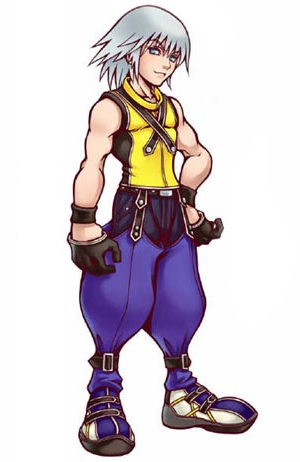
Along with Selphie, Tidus and Wakka, it's also possible to challenge Riku to a fight at this stage. He's significantly tougher than the other three, combining quick close-quarters swordplay with the ability to guard and a dangerous countering kick attack. The trick to besting Riku is to memorise his tells and attack patterns - move in to steal quick hits between his own attacking swings, and if he falls onto his back with his legs in the air, then move swiftly out of the way to avoid that lethal counter kick. Fighting Riku teaches the value of caution, patience and opportunism, three things that will come into play in the vast majority of Kingdom Hearts' many combat challenges. In a nice touch, Sora will also keep track of his record against Riku, remembering his wins and losses as a running tally. This subtle contribution to character development serves to strengthen the competitive streak that lies beneath their friendly rivalry, and helps make the otherwise infallible Sora feel that little bit more human.
Thanks to dormant memories from my playthrough three years ago, it doesn't take me very long to find the required items for the raft - although I do spend a little bit of time battling the other islanders to earn some experience and refamiliarise myself with the to-and-fro of combat. Upon taking all the requested items back to Kairi, she rewards me with the gift of a healing item and asks if I want to call it a day. While I could say no and continue to explore the island for fun and experience, I agree to finish up for the day and surrender control for another cutscene exploring the motivations for each character to leave the islands. Kairi, not a native of the Destiny Islands, wants to see her homeworld again. Riku, thinking more existentially, wants to explore the myriad worlds out there in an attempt to find out why he ended up on this one. And Sora, being the lazy daydreamer that he is, concedes that he just wants to see new places with his friends. The day's events end with Riku taunting Sora with a paopu fruit, a star-shaped fruit said to intertwine the destinies of any two people who share one. This is the first clear indication that Sora might feel something more than friendship for Kairi, as he becomes very flustered at the suggestion. Riku runs off before Sora can explain himself, and the action fades as the sun sets on another day on Destiny Islands...
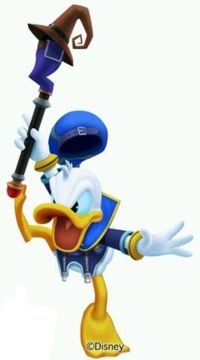
Meanwhile, on a far-off world known as Disney Castle, the Kingdom's grand wizard Donald Duck arrives in court to wish King Mickey a good morning. He's met with an empty throne, and Pluto carrying an envelope bearing the King's seal. Donald reads the content of the letter and immediately runs into the castle gardens to find Goofy, leader of the royal knights. While trying to explain the top secret contents of the letter to his friend, Donald ends up inadvertently attracting the attention of Queen Minnie and his significant other Daisy, leaving him with a lot of explaining to do. The scene doesn't do anything to directly move the story along (that will come later), but it does serve to introduce us to the characters of the short-tempered Donald and the more relaxed, bumbling Goofy. It's also an opportunity for some light-hearted visual comedy, with the door into the King's throne room being a lot smaller than it initially appears, and Donald not realising the Queen and Daisy are behind him until it's too late.
Leaving Donald in a very precarious situation, the action shifts back to Destiny Islands as Sora, Riku and Kairi make further preparations for their raft trip the following day. Initially it seems like this preparation is going to be slightly more interesting than the previous day's fetch-questing - upon entering a new zone of the islands named the Cove, Sora meets Riku and the two start discussing potential names for their raft. Unable to come to an agreement, the boys agree to settle their dispute in "the usual way". Turns out this is a race to a star-shaped tree at the other end of the Cove and back again. There are multiple paths to take to the objective, ranging from the tops of trees to a ladder and zip-line. While this does introduce a new platforming element to the game, it also brings a very quick realisation that the platforming mechanics in Kingdom Hearts aren't very good. Sora's jump is noticeably delayed following the button input, and he hangs awkwardly in the air before sinking like a stone. His in-air manoeuvrability is also poor, meaning it's difficult to course-correct any jump that might be off-target on account of his delay in leaving the ground.
Something else I find slightly bizarre is the short cutscene immediately before the race, where Sora starts unnecessarily adding extra stakes to the competition as if there wasn't anything already riding on it. "If I win, I'm captain," he says, confidently thumbing his own chest. But I thought the whole point of this race was to decide what the raft was going to be called? Why are we raising the stakes? For the sake of competition? Anyway, he's put in his place by Riku who ups the ante even further by saying that the winner of the race gets to share a paopu fruit with Kairi. This is another piece of dialogue that builds a lot of character in very few words, even if it is delivered in a slightly sinister tone that's not altogether comfortable, given the established implications of sharing a paopu fruit and Kairi's complete lack of knowledge or consent.
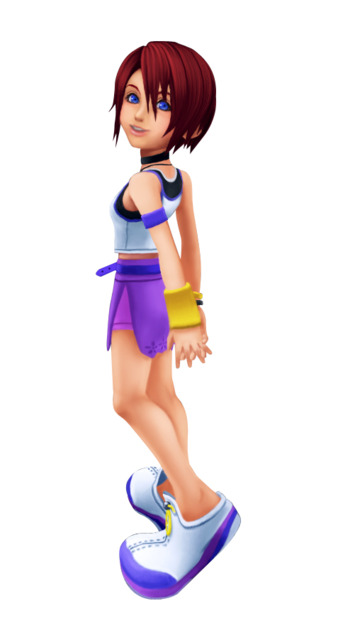
Despite some wrestling with the poor platforming controls, I'm able to win the race thanks to the zip-wire. The result of the race feeds back into the aforementioned tally system too, further reinforcing the competitive undertones of Sora and Riku's friendship. The race can be re-run multiple times, with each victory yielding a Pretty Stone, but instead I opt to move the story along by seeking out Kairi. She's down on the beach by the newly-finished raft, and tasks us with our next objective, which is... Another fetch quest. This one is even worse than the first, on account of there being almost three times the number of objectives, and all of them being even harder to locate than the ones from the previous day. This time we're hunting for provisions for the trip - three fish, three mushrooms, two coconuts, a seagull egg, and some drinking water. What makes this scavenger hunt particularly frustrating is how small some of the items are, making them very difficult to spot amongst the environment. Thankfully my memory of this portion of the game leads me to all the objectives without too much delay - the fish are swimming in the shallows just off the beach, mushrooms can be found tucked away in dark places away from direct sunlight, the coconuts can be obtained by whacking trees with Sora's wooden sword, the seagull egg is sitting on top of one of these coconut trees, and drinking water can be gathered from the freshwater spring near the wooden shack in the middle of the island.
Our hunt for mushrooms takes us into a new area known as the Secret Place, a hidden cave with scribbled drawings all over the walls and a mysterious locked door at its deepest point. While picking mushrooms, Sora spots a pair of drawings he and Kairi made of each other when they were both younger. His reminiscing causes him to take up a piece of chalk and add a new element to the piece - an outstretched hand from his face to hers, holding a paopu fruit. It's a beautifully understated moment that demonstrates Sora's feelings for Kairi may extend beyond friendship, accompanied by a gentle musical motif and using no voice-acting to ensure that Sora's actions speak for themselves. It's one of my favourite moments of storytelling in Kingdom Hearts.
Unfortunately it's all undone as quickly as it's built up. Sora's private moment is interrupted by the arrival of a cloaked, hooded figure who tells him that his world has been tied to the darkness and will soon be swallowed whole by it. The awkwardness of his vague dialogue is matched by Sora's false bravado, completely shifting the scene from something beautiful into something almost laughably cringe-worthy. After the nebulous figure finishes his speech he disappears, leaving Sora wondering if he simply imagined the whole thing. No point dwelling on any of that now, though - I need to get these provisions back to Kairi!
Back at the raft, Sora finds Kairi making a charm out of thalassa shells to bring them good luck on their voyage to other worlds. I think this dialogue might be new to the Final Mix version, as I don't recall it from any of my childhood playthroughs of the game, but unfortunately I don't have the original PS2 version to corroborate that claim. Without spoiling too much, it nicely foreshadows events surrounding the same good luck charm later in the game. After handing over the provisions, control is rescinded for another character-developing cutscene, this one solely between Sora and Kairi. It's a more honest and raw moment between the two characters as they let their cheery guards down, accompanied by the same musical motif as the previous scene in the Secret Place. It's yet another example of why the relationship between Sora and Kairi is one of my favourite things about this game.
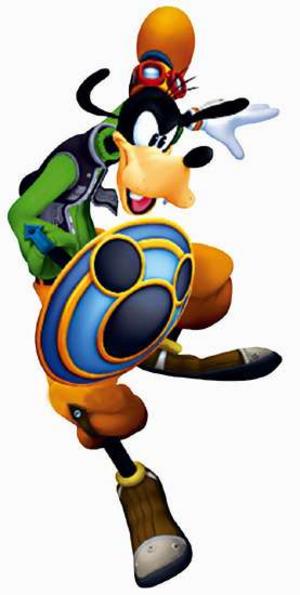
With the sun setting on another day on Destiny Islands, action shifts back to Disney Castle. We get to read the content of the letter left for Donald by King Mickey - several of the stars in the sky have been going out one by one, and he's left the kingdom on a journey to try and find out why. He can't be certain, but he suspects something sinister is afoot. He's tasked Donald and Goofy with finding someone with a special "key", the "key" to everyone's survival, and sticking with them on their quest. With the Queen's blessing, Donald and Goofy join up with the royal chronicler, Pinocchio's Jiminy Cricket, and head to the castle's Gummi Ship... Hangar? I guess you'd call it a hangar. On their way, they discuss the need to avoid muddling-- er, meddling in the affairs of other worlds while they travel. As the duo prepare for blast off, we're treated to one final visual gag - rather than shooting forwards out of the open hangar doors, royal engineers Chip and Dale open a trap door beneath the ship and send it plummeting out of the bottom of the world. I have to admit, this one still gets a little chuckle out of me even now, probably because of that trademark Goofy laugh as they descend. The ship regains its bearings, and Donald and Goofy set off through Gummi-space to the first stop on their journey...
As the action shifts back to Destiny Islands for the final time, Sora is sitting in his bedroom. He glances out of the window to see that a storm has struck the island. Fearing for the safety of the raft, Sora makes a break for the island to check on things, leaving his mother announcing "Dinner's ready!" to an empty room. I remember finding this scene really jarring the first time I played through the game, since my original impression of Destiny Islands was that it was an island paradise full of orphaned kids surviving Castaway-style, and suddenly here's Sora's mum calling him down for dinner. it makes perfect sense, of course - the island itself is just off the coast of a seaside town, and it's where Sora, Riku, Kairi and their friends go to play. It was just a little weird having those expectations built up in the game's opening hour or so, and then having them dashed with such a menial, ordinary occurrence.
Sora arrives on the island to find Riku's and Kairi's boats already docked (begging the question, why did they need to build a raft if they all have their own boats?), a huge glowing orb of darkness hanging in the sky, and the strange, shadow-like creatures from his dream swarming all over the island. His wooden sword is completely ineffective here, forcing me to run through the hordes of enemies spawning up out of the ground until I reach Riku. Looking up at the menacing ball of darkness, he announces that the door has opened and the darkness has come to take all three of them off the island. He offers a hand to Sora in much the same way as he did in the opening cinematic, except this time it's not water he's surrounded by, but darkness instead. Sora tries to take Riku's hand, but the pull of the darkness overwhelms them both. When Sora comes to, Riku is nowhere to be seen, and in his hand is a strange weapon - a sword shaped like a key. A Keyblade, as announced by the disembodied voices implied by the words all over the screen at this point.
Now equipped with a proper weapon, Sora can deal damage to the shadows popping up from under his feet. It makes for good practice, but the fact the enemies keep spawning infinitely means I eventually need to stop fighting and make a beeline for the next destination - the Secret Place, now sealed behind the same ornate door from Sora's dream. Inside the Secret Place, Sora meets up with Kairi, but something is wrong - she seems unresponsive, almost zombified. Before Sora can say or do anything, the door behind Kairi flings open, sending out a fresh wave of darkness that sweeps her up and carries her towards him. Sora tries to catch her, but as he wraps his arms around her, she vanishes. Now, I can't go into specifics here for fear of spoiling things before we've really begun, but I need to communicate the fact that this moment is very significant. We'll be referring back to it in future episodes, so don't forget about it.
Unable to withstand the torrent of darkness, Sora is carried out of the Secret Place and back onto the beach, where he witnesses the destruction that the darkness has wrought on his homeworld. Huge chunks of Destiny Islands have been sucked up into the glowing orb hanging above, and what little remains of the island is corrupted by the darkness. Getting to his feet, Sora turns to see the huge shadow from his dream standing behind him. Only this time, it's definitely not a dream...

BOSS - Darkside - There isn't much to differentiate this Darkside fight from the previous one. It brings all its obviously-telegraphed moves from the previous fight, plus a couple of new ones too. It can now reach deep into the ground, a move which creates a shockwave similar to its fist attack, but with the added benefit of bringing its head closer to the ground and making it a much more viable target for Sora's attacks. The other new addition to its armoury is a charged attack which rains down slow-moving energy balls from above - these don't home in, don't deal much damage and are easy to dodge, making them more of a nuisance than anything else. As with its previous attack cycles, everything has a lengthy wind-up that gives Sora plenty of time to get a combo or two in before retreating to a safe distance. Once again, a loss here does not cause a Game Over state, but winning the battle is preferable for the experience points it yields.
Whether defeated or victorious, Darkside returns to the glowing ball of darkness from whence it came. Sora tries desperately to cling on, but the pull of the darkness is too much and he loses his grip, ascending into the menacing orb and disappearing along with Riku, Kairi, and the rest of the Destiny Islands, into the black void above...
---
Here ends the first proper part of the Keyblade Chronicles. I was originally hoping for this initial entry to cover more of the game, but I decided to cut it short after seeing how lengthy it was becoming. I realise this is a very long blog and I apologise for that - I'll do my best to condense future entries into shorter entries. Despite the mixed tone of this blog covering the game's opening hours, I'm feeling optimistic about the series going forward. Join me again next Monday when I'll start digging deep into the next batch of worlds - Traverse Town, Wonderland, Olympus Coliseum and Deep Jungle. I'll also be taking a look at the early Gummi Ship portions of the game, including the missions exclusive to the Final Mix version. Until then, thanks very much for reading folks. Take care and I'll catch you next Monday for more of the Keyblade Chronicles.
Daniel
---
Currently playing - Kingdom Hearts Final Mix (PS4)
